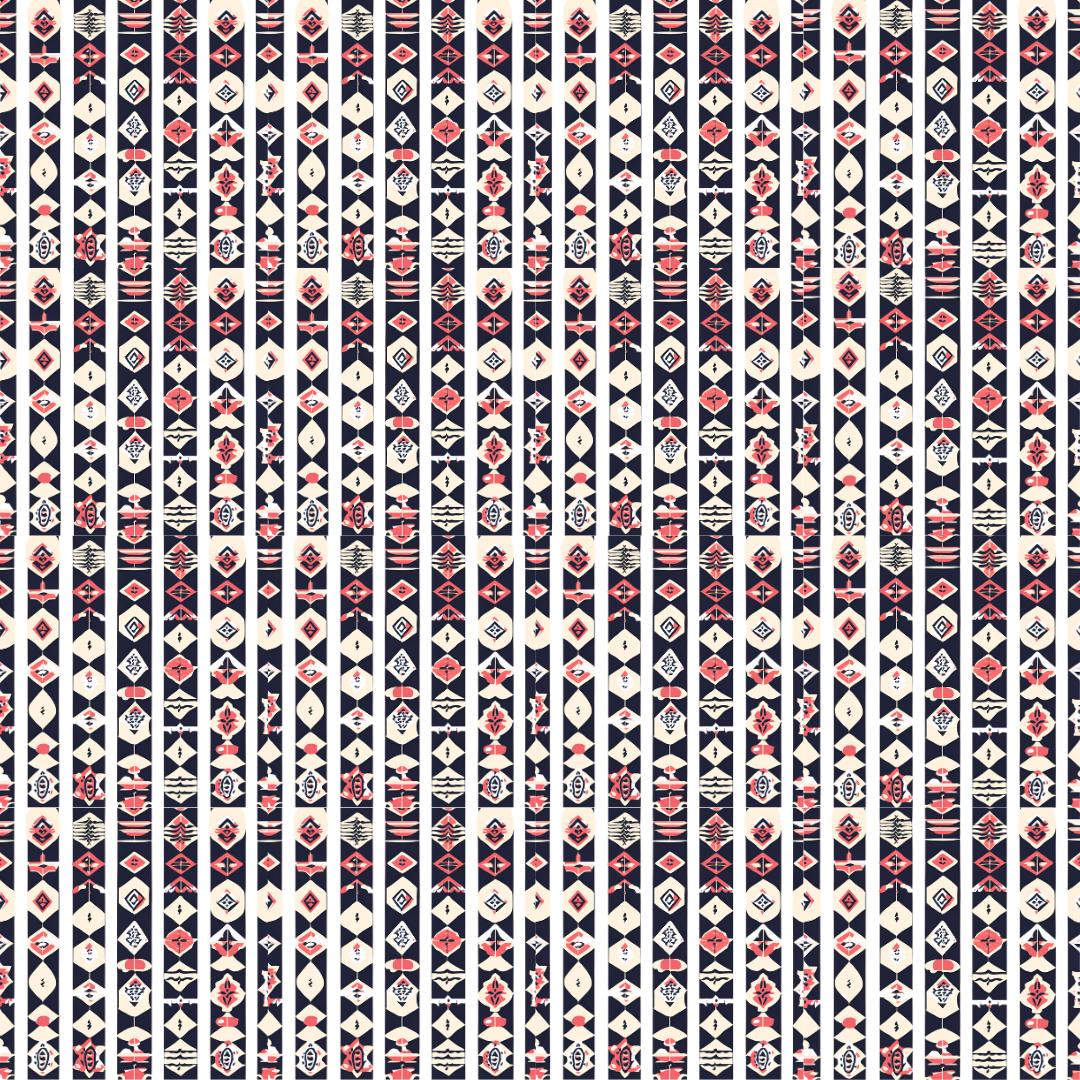Pattern for Any Background
by I Am A Happy User in Design > Digital Graphics
399 Views, 1 Favorites, 0 Comments
Pattern for Any Background
.png)
This piece is inspired by geometric motifs and the beauty of repetition to craft a visually captivating design. Drawing from both modern and traditional influences, I chose bold shapes such as diamonds, squares, and triangles, arranged with precise symmetry and structured vertical alignment. The contrasting color palette—combining deep navy, rich red, and a neutral cream—adds a sense of vibrancy while maintaining balance.
The interplay between these sharp geometric elements and the soothing repetition creates a rhythmic, almost hypnotic effect, encouraging the viewer to explore the details while appreciating the overall cohesiveness. This balance of complexity and order is a key aspect I wanted to highlight in the design.
The versatility of the pattern is another significant consideration. It can seamlessly transition between different creative applications—from textile prints for fashion or home décor to wallpaper, stationery, or digital media assets. The design's adaptability makes it a valuable asset for both functional and decorative purposes.
When developing this pattern, I was fascinated by how geometric forms can communicate different emotions and ideas depending on their arrangement. By emphasizing both intricacy and simplicity, I aimed to create a pattern that appeals across various contexts, lending itself to a broad spectrum of artistic and practical uses.
I hope this project serves as an exploration of how patterns, when thoughtfully composed, can enhance the visual and emotional impact of everyday objects and spaces. Through this work, I sought to celebrate the timeless nature of geometric patterns, while also experimenting with a fresh and modern twist.
This project is submitted for the Patterns Contest, and I hope it inspires viewers to see the depth and rhythm that patterns bring to creative works. It has been an exciting process to bring this vision to life, and I am eager to see how others may interpret or utilize this design in their own projects.
Supplies
Design Platform: Canva
- Canva was the primary tool used to create the base elements of the geometric pattern.
Magic Media Tool:
- The Magic Media tool within Canva was utilized to automatically generate and arrange the repeating pattern. This tool helped streamline the process of creating the intricate, repeating design with precision.
Duplication Feature:
- After generating the pattern using Magic Media, I duplicated and aligned the elements to expand the pattern across a larger canvas, ensuring seamless repetition.
Pattern Application:
- This pattern can be used for multiple applications, including textiles, wallpapers, or digital assets like backgrounds and templates.
Step-by-Step Guide for Creating a Pattern in Canva
1. Begin a New Project in Canva
- Start by logging into Canva and creating a new project. Set a custom canvas size suitable for the final pattern, like 1000x1000 pixels if you’re aiming for a square, repeating design.
- Why this matters: Having a properly sized canvas allows you to visualize the pattern as it will appear when repeated across different surfaces.
2. Use Canva’s AI-Powered Pattern Tool
- Take advantage of Canva's pattern creation feature powered by AI to generate an initial design based on your inputs. It offers suggestions or even automatically builds repeating patterns for you.
- Why this matters: The AI tool speeds up the process by providing a starting point, which you can further refine.
3. Modify the AI-Generated Pattern
- Once the pattern is generated, customize it to suit your specific project goals. You can tweak the colors, shapes, or arrangement to better fit your design vision.
- Why this matters: Personalizing the design ensures that the final product aligns with your unique style and purpose.
4. Replicate and Position Elements
- With your customized design ready, duplicate elements or entire sections using Canva’s "Duplicate" function. Carefully arrange these elements to create a smooth, continuous pattern.
- Why this matters: Ensuring the elements align perfectly allows for a seamless repeating pattern, critical for larger applications like wallpaper or textiles.
5. Make Final Edits
- Zoom out to observe how the entire pattern looks when tiled. At this stage, refine the layout, adjust colors, or fix any misalignments.
- Why this matters: Previewing the design at a broader scale helps ensure that the pattern looks cohesive and polished when repeated.
6. Export the Finished Design
- When satisfied, export the design in your chosen format (PNG, JPEG, or PDF). Make sure to use a high resolution if your project involves printing.
- Why this matters: Exporting in the correct format and resolution ensures your design is versatile and maintains quality across various uses, whether for digital platforms or print.